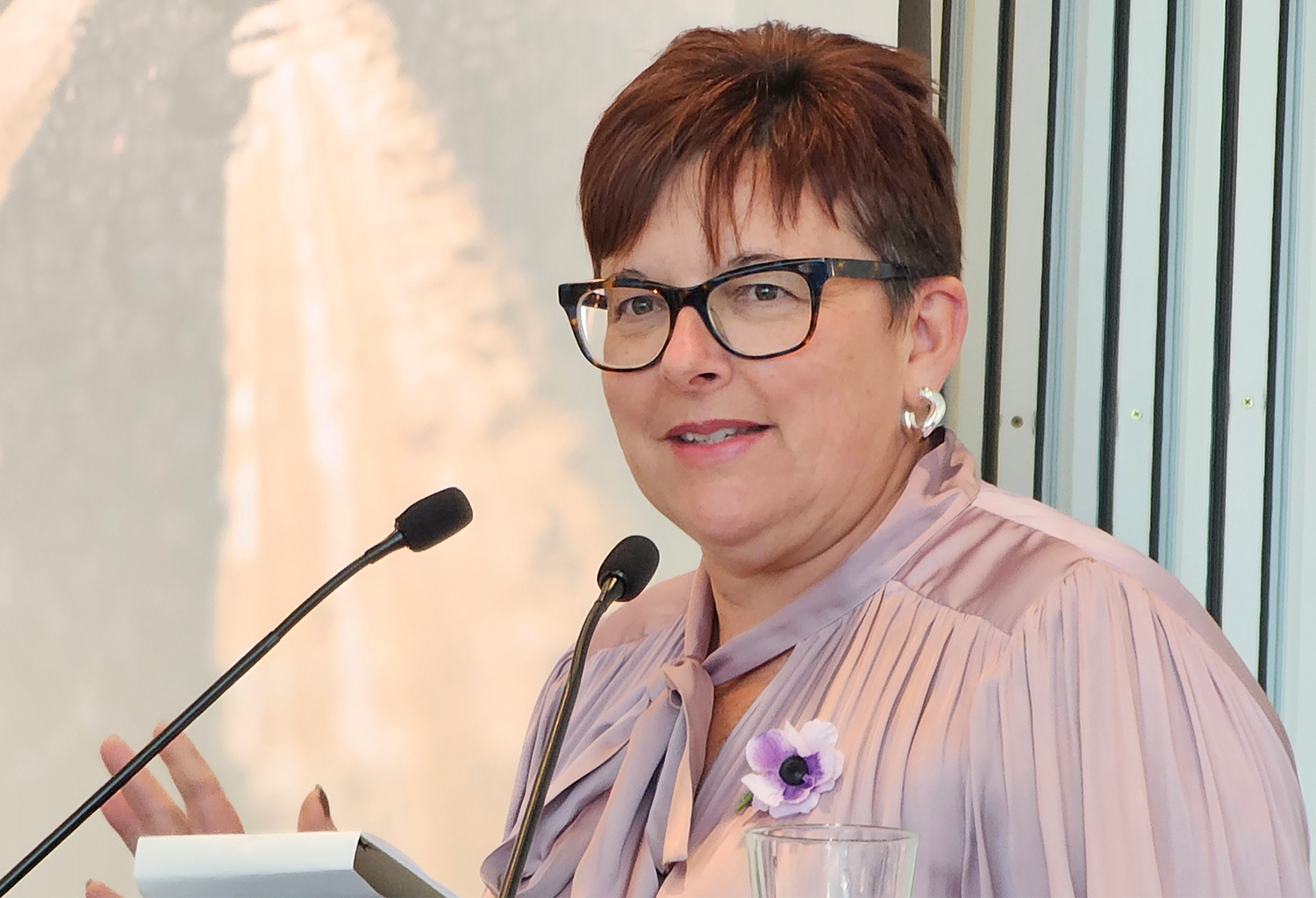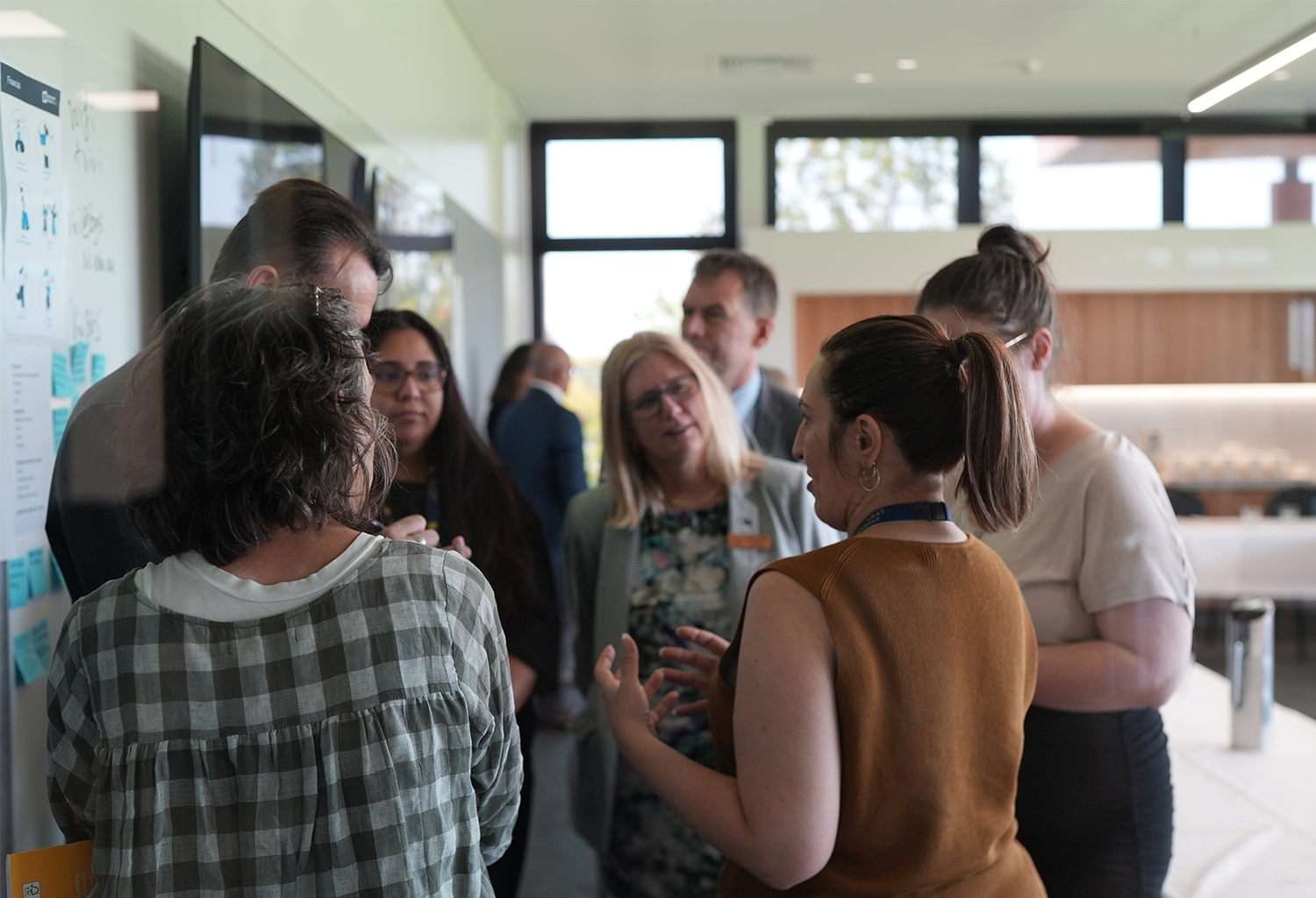Sally Lasslett: meeting the needs of students
in Special Assistance Schools
Hester Hornbrook Academy's Impact

In recent years there has been consistent growth in Independent schools – including among Special and Special Assistance schools, catering for the needs of students who might have social and emotional challenges and who are often unable to be catered for in traditional schools.
Among them is the Hester Hornbrook Academy, an independently registered, free, Special Assistance School with five campuses across Melbourne, enrolling a total of 780 students.
We talked to Sally Lasslett, Executive Principal at Hester Hornbrook Academy, about the work of her school and others like it.
1. Firstly, can you tell us what the term Special Assistance School means, and what’s the difference between them and Special Schools?
Hester Hornbrook Academy is an Independent Special Assistance School (SAS). We are committed to ensuring young people have access to high quality wellbeing for learning and learning for wellbeing.
Students who attend the Academy have a diagnosed or imputed social and emotional disability. Federal funding through the NCCD (Nationally Consistent Collection of Data) is available for these young people and allows us to carry out our programs and provide multidisciplinary classroom teams.
We are unable to cater for students with an IQ lower than 70. We are only funded for students with a social/emotional disability, or cognitive and sensory disabilities such as autism or ADHD, not an intellectual disability.
2. We sometimes refer to students who are ‘disengaged’ from school? What does this mean, and what factors cause a student to be disengaged?
All the young people who attend Hester Hornbrook have become disengaged or detached from education.
The level of student disciplinary exclusion, non-attendance, and disengagement from school in Australia is very concerning. Even more concerning is that the bulk of young people who are not accessing a school education due to exclusion or disengagement, have life histories of disadvantage, trauma and harm.
Special Assistance Schools often do ‘the heavy lifting’ to support and educate these young people. Our network of schools does this with passion, commitment, and joy!
Hester Hornbrook, like other SAS, focuses on supporting young people who have experienced education and/or social challenge and disengagement, or school refusal or what’s referred to as ‘school can’t’. They require more than what traditional educational systems currently offer.
Young people usually find their way to Hester Hornbrook Academy through being referred by their parent/guardian, care team, school network, word of mouth, or by a previous enrolment/connection. We offer a way forward for young people who have are experiencing ‘school can’t’.
‘School can’t’ is:
- An expressed reluctance to attend school
- Sleep disturbances
- Frequent absences from, or late arrival at, school
- Psychosomatic complaints, such as headaches and nausea
- Emotional distress when faced with the prospect of attending school, including anger, crying and meltdown
- Avoidance behaviours such as not wanting to get out of the bed or getting ready for school, hiding or refusing to leave the house, or refusing to leave the car.
3. What sort of challenges do these students face?
They face a number of challenges, due to social/emotional, cognitive and/or sensory disability (or disabilities) which are either diagnosed or imputed.
They have been disengaged or at risk of disengagement from school. They will have attended school for less than 5 days over the last 10 weeks. Our students have often achieved little to no academic progress. They are also at risk of disengagement, due to social, emotional or past trauma.
Our young people have individual barriers to education which include (but are not exclusive of):
- Out of Home Care
- Aboriginal and Torres Strait Islander
- Young Parent
- Housing insecurity
- Financial insecurity
- Food insecurity
- Socio Economic status
- Extensive alcohol or other drug use
- Connection with the justice system
- Family violence
- Culturally and linguistically diverse
- Engagement with government agencies and community service organisations
- Health issues which impact engagement in education or social connections with peers.
4. Can you tell us why a ‘conventional’ school can’t meet the needs of these students?
While Hester Hornbrook has a long history, the need for Special Assistance Schools is more relevant than ever, as can be seen from our growth. A 2023 report by the Melbourne University Graduate School of Education revealed that ‘Australia has a very serious educational problem that we seemingly do not want to acknowledge. It is an issue that needs to be brought out into the open and receive urgent attention’.
This report cites a conservative estimate that there are ‘upwards of 50,000 unaccounted, detached students’ who are not engaged in some form of education.
In addition, there is an unrecognised number of students currently enrolled in a school but are not attending and/or engaging in the educational program offered to them. The Hester Hornbrook HOPE (Healing Oriented Program of Education) model of education offers an alternative solution to ensure that all young people have access to education – a basic human right!
HOPE is focused on supporting young people who have experienced education and/or social challenge and disengagement, or school refusal or ‘school can’t’. These young people require more than what traditional educational systems currently offer.
5. You’re now operating on five campuses, with the fifth opening this year in Werribee. Can you tell us a little bit about the academy – how long it has been operation, and its early beginnings?
Hester Hornbrook Academy has a long history and legacy.
Hester Hornbrook was a widow aged 67 who landed in the small settlement of Melbourne in 1849. The town had no supports for people in need – no health care, no sanitation, no made streets, little housing. Gold changed everything. In 1851 when gold was found, there were about 78,000 in the colony, but by April 1854 the number was nearly 237,000, and huge numbers continued to land and set off for the goldfields.
Many men left their families behind, and Collingwood soon became the most densely populated part of Port Phillip, filled with old men, women and children. Melbourne’s Protestants, at Hester’s urging, set up the Melbourne City Mission in 1854 to give spiritual care to these folk. They hired missionaries who walked the streets to check on the spiritual state of the people – but they found desperate needs as well: the sick, the aged, widows, abandoned wives, orphaned children, and almost nothing available to help them.
Hester Hornbrook took over running the City Mission in 1856, with her Ladies’ Committee. It found those in distress and recommended ways to help.
The missionaries found hordes of children roaming the streets. Their parents either had no money for, or no interest in, educating them. In November 1859, Hester opened a school in Collingwood for children brought in by the missionary. Over the next two and a half years, seven more schools were opened. When Hester Hornbrook died suddenly in August 1862 aged 77, her Ladies’ Committee continued her work, eventually opening 12 schools in impoverished parts of the city and suburbs. They ran these schools until the Education Act of 1872 established free, compulsory and secular education for all. The Hornbrook schools, initially surviving on public donations, gradually closed, as their income gradually declined.
You can read more about Herter Hornbrook and Melbourne City Mission here.
It is completely appropriate for our school to be named after this indomitable woman, for the Hester Hornbrook Academy aims to meet the severest need for education among our young people who have become detached from education. We aim to offer a high quality wellbeing and education program so young people can succeed, thrive and become successful members of their community.
Hester Hornbrook would welcome the values underpinning our school today, established in her name. Every student comes from a traumatic place, and she would agree passionately with its current motto: ‘Wellbeing for Learning; Learning for Wellbeing.’
6. Are there any unique or distinctive features of Hester Hornbrook Academy, which might be different from the approach of other Special Assistance Schools?
Hester Hornbrook Academy is focused on supporting young people who have experienced education and/or social challenge and disengagement from school. These young people require more than what traditional educational systems currently offer.
We take a holistic approach, ensuring every young person has equal access to an inclusive, quality education and the best possible opportunity to reach their full potential.
Multidisciplinary teams work collaboratively to provide educational intervention, and deliver personalised, applied curriculum, including the wellbeing supports that empower young people to make positive change in their lives. We recognise that this work begins where the students are, to build relationships which support them to attend school.
At Hester Hornbrook Academy, relationship centred, wellbeing for learning and learning for wellbeing, occurs in our healing-oriented school environment. Holistic care promotes open communication and shared decision making that recognises the multiple dimensions of a person’s wellbeing and the coordination of services that will empower their health, learning and sense of agency.
7. Can you tell us a little bit about your own professional background, and how you came to work in this area of school education?
As a home economics professional, I have a deep passion for developing real life skills. I have been a textbook author, having been a lead author on numerous VCE and other secondary level textbooks.
I have been an educational leader in a variety of school settings and roles for over 30 years. In my time as a leader and principal I have led school turnaround initiatives and significant educational outcome improvements in a large outer metro secondary school.
I am an advocate for our education system as a whole, to improve reengagement opportunities and wellbeing resources available to schools, most particularly those in the outer metro fringe.
I am keen to ensure that my legacy in education is for successful pathways and transitions for disengaged young people, through assisting students to find a passion for learning and ensuring they are successful in developing post school pathways.
I am keen to advocate of Independent Special Assistance Schools and the essential wellbeing supports they provide. As a Special Assistance School leader, I want our network to be strong and supportive of each other. We can do this through Independent Schools Victoria’s support and guidance for our new principals.
8. You work in a unique area of school education. How is the work of teachers different in this type of school? Do they require special skills or aptitudes?
Our workforce reflects a commitment to trauma informed practice. Our workforce is vetted to ensure that only staff who have a commitment to this way of working or are genuine about learning how to work this way, are part of this school.
We are committed to staff wellbeing and make sure staff are equipped with everything they need to be able to work at their best. Our educational environment seeks to attract, continually develop, and maintain a highly skilled and diverse workforce. We ensure that our workforce collaborates as a multi-disciplinary team in the areas of wellbeing, learning and wrap around supports, including an extensive allied health team.
9. As a teacher and school leader, how do you judge the success of your work?
The vision at Hester Hornbrook is for an inclusive and just community where all students have equal access to education and the opportunity to create their own future.
My success is measured in the success and positive pathways of our young people. For some young people, the mere thought of entering an educational facility creates anxiety. This is often due to past experiences of trauma, which can include family violence, bullying, and learning difficulties, among other social, emotional and mental health-related issues. If I can work with my amazing staff to bring joy, lifelong learning and successful pathways for young people who have been not catered for in our education systems, this is a measure of impact and success.

